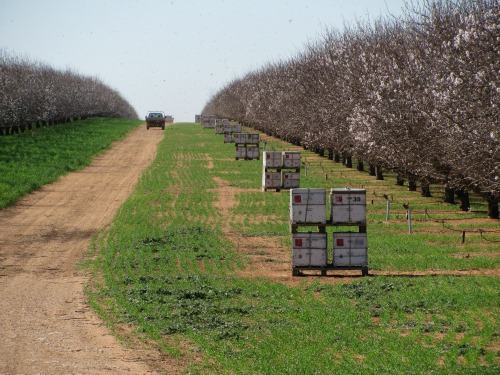All over the world, beekeepers keep honeybees in hives so that they can harvest delicious honey and have their gardens and crops pollinated by this industrious insect.
 |
| Beehives on a roof |
There are approximately 200,000 beekeepers in the United States who keep from one to thousands of bee hives. Most of these beekeepers are small-scale, meaning they only keep a few hives of honeybees for themselves. Often, these beehives are kept in a backyard, on a porch, or even on a rooftop! A few beehives is enough for these beekeepers to pollinate their own land and produce honey for their family.
Commercial beekeepers keep hundreds or even thousands of honeybee hives for commercial use. Keeping this many honeybees is a full-time job, and commercial beekeepers depend on their honeybees for all of their income. Commercial beekeepers will produce large amounts of honey to bottle and sell, rent their hives to growers for pollination, raise honeybee hives to sell to new beekeepers, or sell other products produced by the honeybees.
Migratory beekeeping is a special type of commercial beekeeping. Beekeepers who “migrate” move their honeybee hives all across the country so that the honeybees can pollinate crops. Pollination is the fertilization of plants necessary to produce nuts, fruits, and even seeds. For a plant to be pollinated, the pollen grains need to be moved from the stamen (the male part of the flower) to the pistil (female part of the flower) so that fertilization can occur. There are many different animals and insects that pollinate plants. Bats, wasps, butterflies, and of course honeybees are all important pollinators. Honeybees are especially good pollinators because pollen is their primary source of protein. As they travel from flower to flower collecting pollen to eat, they pollinate our crops.
 |
| A full truck of beehives |
 |
| Hives in the California almond groves |

No comments:
Post a Comment
Thank you for your comment/question! We are busy buzzing across American spreading the sweet news about honey and beekeeping, but we will do our best to respond in the next 24 hours. We appreciate your patience!